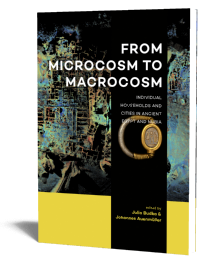Abstract:
New Kingdom burial customs in Nubia (northern Sudan) are well traceable by means of large cemeteries, in particular Egyptian style rock-cut shaft tombs with pyramidal superstructures. These tombs and their contents have lately been discussed as important data sets offering insights into the diverse population, material culture, funerary and social practices in New Kingdom Nubia.
A new rock-cut shaft tomb, potentially with pyramidal superstructure (Tomb 26), was discovered by the AcrossBorders project on Sai Island in 2015. This tomb yielded intact interments of officials connected with the Egyptian administration of colonial Nubia, buried together with family members and rich burial assemblages. Tomb 26 allows a close comparison with contemporaneous evidence from the nearby New Kingdom town of Sai, therefore providing a more complete picture of life and death in New Kingdom colonial Nubia. This book is the final publication of Tomb 26, its architecture and material culture, including chapters on geology, human remains, scientific analyses and a compilation of the material discovered. New information provided by AcrossBorders excavations of Tomb 26 contribute to recently discussed questions regarding cultural encounters and social practices in New Kingdom Nubia. Comparable material from other tombs on Sai and elsewhere in Nubia is discussed in order to stress the relevance of the new discovery.
The archaeological contextualisation of Tomb 26, in combination with scientific analyses like strontium isotope analysis, offers fresh information on the complex coexistence of various cultural groups on Sai with slightly different approaches to their cultural and social affinities during the New Kingdom. Overall, Tomb 26 and its associated finds are of prime significance for understanding lived experience on New Kingdom Sai and more broadly in New Kingdom Nubia.
with contributions by
Johannes Auenmüller, Cajetan Geiger, Rennan Lemos, Andrea Stadlmayr and Marlies Wohlschlager
Contents
Preface
Julia Budka
Chapter 1: Introduction
Julia Budka
Chapter 2: AcrossBorders’ excavations in SAC5
Julia Budka
Chapter 3: The architecture and building phases of Tomb 26
Julia Budka
Chapter 4: The geology of Tomb 26
Cajetan Geiger
Chapter 5: The artefacts including the ceramics of Tomb 26
Julia Budka
Chapter 6: Anthropological report of human remains recovered from Tomb 26
Marlies Wohlschlager and Andrea Stadlmayr
Chapter 7: The individual tomb groups of Tomb 26
Julia Budka
Chapter 8: The reconstruction of the use-life of Tomb 26
Julia Budka
Chapter 9: Tomb 26 in the context of cemetery SAC5
Julia Budka
Chapter 10: Cemetery SAC5 and its relation to the New Kingdom town of Sai
Julia Budka
Chapter 11: Khnummose and a group of New Kingdom stone shabtis – insights into colonial society in 18th Dynasty Nubia
Johannes Auenmüller and Rennan Lemos
Chapter 12: Summary
Julia Budka
Bibliography
Appendix


Prof. dr.
Julia Budka
Julia Budka studied Egyptology and Classical Archaeology at the University of Vienna and received her PhD in Egyptology, University of Vienna in 2007. She held a researcher position at Humboldt University Berlin (2004-2012) and was a temporary replacement Assistant Professor at the University of Vienna (2011-2012). Her speciality fields are Egyptian field archaeology and material culture; she conducts excavations in Sudan and Egypt, both at funerary and settlement sites, especially at Luxor (Thebes), Sai Island and between Attab to Ferka (MUAFS and DiverseNile projects).
read more












